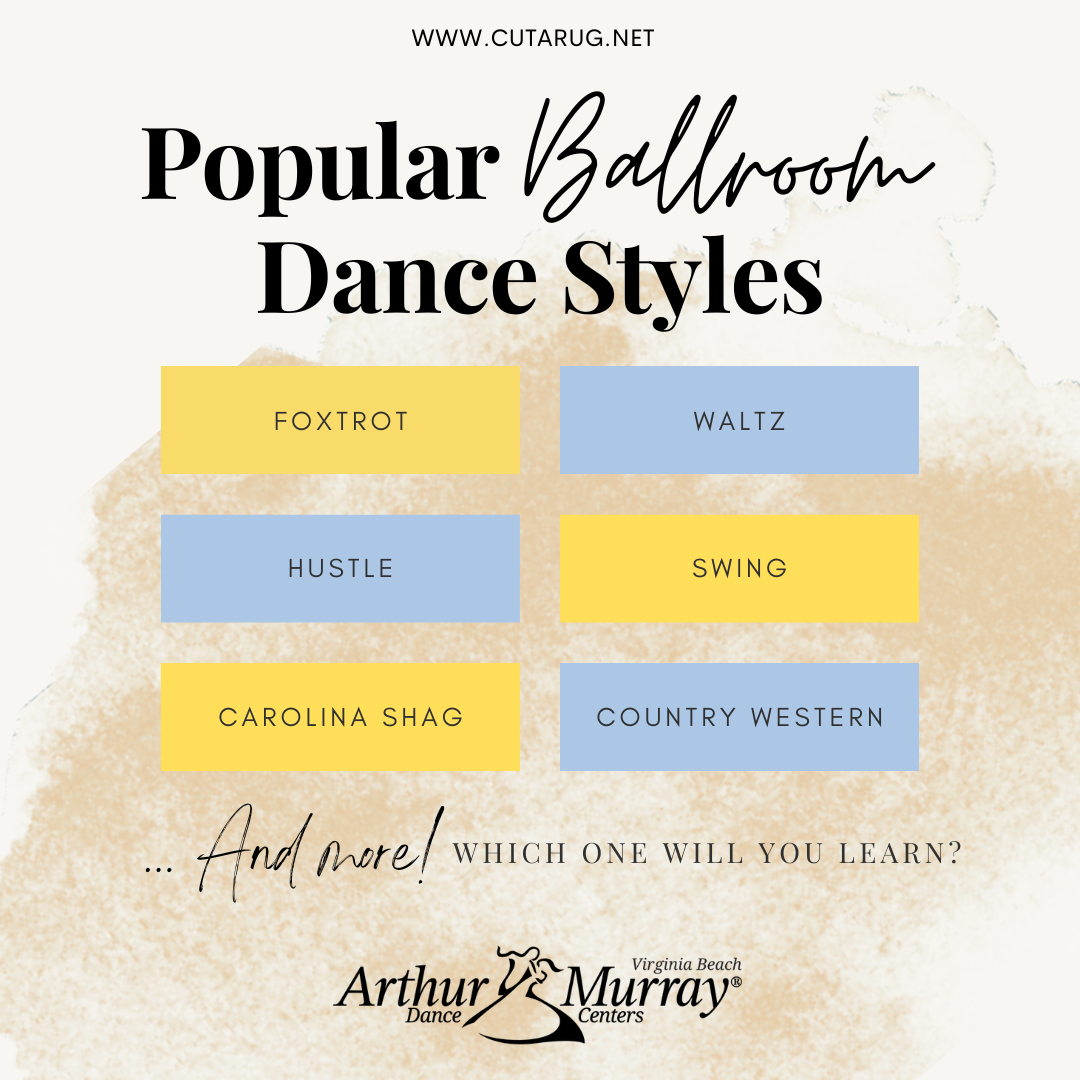Interested in learning to dance, but can’t place your finger on which type of dance you’d actually like to learn? You’re not alone. That’s the case for many people who are just starting out in the diverse world of dance and, believe it or not, it’s even a chore for those with experience at times. That’s because there are so many different types to choose from and dancing isn’t a one-size-fits-all formula. With familiar styles, like hip-hop, ballet, and contemporary or others, like tap, modern, and jazz, where exactly should you place your focus? The answer is that you should learn a dance type that makes you excited when you see it performed (not just because it’s familiar), whose typical music you enjoy, and one that’s at home with your personality (as each style brings a different attitude of its own)!
In this article, we discuss the different types of ballroom dance that you might find of interest; in fact, the list that we’ve created for you covers some of the most popular types of ballroom that are danced today. These brief introductions will give you just enough detail to determine if you’d like to continue exploring certain styles and, if that’s the case, they’re all linked to other pages where you can indulge further.
💃 Carolina Shag
The Carolina Shag is a quick, upbeat dance that gives its dancers lots of room for imaginative improvisation. While an exciting style, it is typically danced smoothly to an eight-step pattern, stepping forward and backward, and switching weight between right and left sides.
💃 Country Western Two-Step
Generally danced on a quick-quick-slow-slow count to music between slow and medium tempos, country western two-step can be described as either a mellow or upbeat type of dance. Spins and turns are often incorporated, making it all the more fun.
💃 Foxtrot
You might think of foxtrot like a stroll in the park. It’s a playful dance with an air of youth, and while playful, it’s also quite romantic and beautiful. This dance goes by a count of slow-slow-quick-quick or slow-quick-quick.
💃 Hustle
Smooth and fast with lots of turning and spinning, the Hustle is a culmination of several dance forms like disco, swing, and mambo. Hip movements and complex hand- and footwork also characterize this dance style.
💃 Jitterbug
This fun, energetic style of dance, with its intricate footwork, can offer an exhilarating challenge. Jitterbug typically incorporates elements of various swing styles and advanced dancers often incorporate faster movements, along with flashy flips, spins, and breakaways!
💃 Lindy Hop
Lindy Hop, a widely recognized type of swing with associations to jazz and tap, can be described as high-energy, free, upbeat, and fun! You’ll see dancers on the floor showcasing enthusiastic footwork, swing-outs, fast rotations, and improvisation.
💃 Swing
Swing encompasses various types of dance in the same family and is generally characterized by high energy, plenty of turns, lifts, and intricate footwork. With so much variety, there are many styles to choose from, all of which are just as much fun to dance as they are to watch!
💃 Tango
Dramatic, big, and theatrical are some ways that you might describe the Tango. While similar to the Argentine Tango, this dance is less personal and more show-oriented in a way such that a story can be conveyed and perceived through each performance.
💃 Viennese Waltz
Danced at a fast, yet graceful, pace, the Viennese Waltz is one of the most beautiful dance styles today. It exhibits small, smooth turns, giving dancers the appearance of gliding across the dance floor in an effortless air of regality.
💃 Waltz
The Waltz is a popular, classic social dance characterized by romance and grace, and is often the style of choice for first dances at weddings. Step-step-close is the basic pattern that accompanies its distinguished rise and fall motion and body sways.
💃 West Coast Swing
West Coast Swing is one of the slower swing dances and can vary anywhere from conservative to funky; it lends itself to lots of individuality, too. This dance is characterized by a slow and sleek feel and an elastic connection between dancers.
Keep in mind that these are just brief introductions to the various types of ballroom that you can learn. If there’s one or more that has your interest, then some of the best ways to get started are: watching videos to see them performed; reading other resources to learn more about them; and putting them to the test with introductory lessons at your local ballroom dance studio.
Now that you’ve gotten familiar with some of the most popular types of ballroom, you might be interested in exploring a bit about the various kinds of Latin dance taught professionally in studios, too. Latin dances are equally enjoyed all over the world so, if you’re curious, we invite you to “Part 2” of this topic where we’ll introduce you to a number of them.
How has the search for an ideal dance type been for you? Has anything been particularly helpful in making your decision along the way? We’d love to hear your thoughts and experiences in the comments section below!
